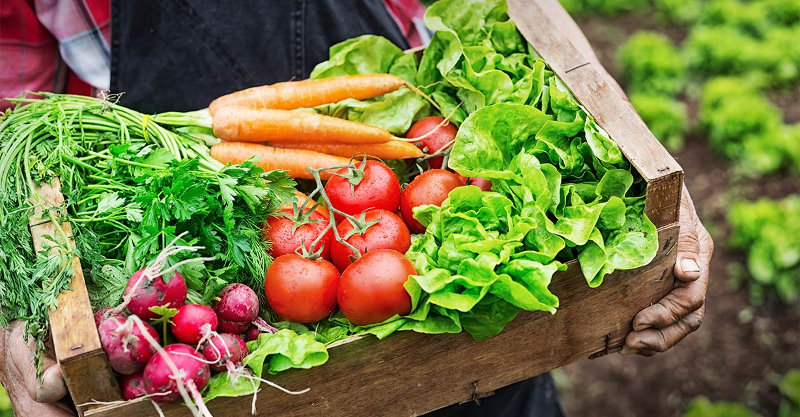I recently read an inspiring magazine article that got me thinking about who I was feeding today. It seems like a simple question, but what if you and I could make a difference in how a neighbour or stranger eats today. The young woman featured in the article answered that very question. When she was nine-years-old, she grew a large 40-pound cabbage from a seedling provided by her teacher. That in itself is quite a remarkable feat for someone so young, but what got me inspired as I read the article was what she did with the cabbage. She helped turn this one cabbage into a hearty soup to feed 275 people at a local soup kitchen. Then when noticing a need in her community, she started to grow vegetable varieties and donate them to homeless shelters, community centres, senior citizens, veterans, and the unemployed.
Now nine years later, her non-profit organization has 100 gardens growing across the country and has donated thousands and thousands of pounds of fresh produce to people in need.
If this young woman could take a 40-pound cabbage and feed so many people what can you and I do in our communities?
You don’t need a large garden plot to grow vegetables. Depending on how many people you plan to feed, you can look at creating a garden in your backyard or how about a container garden, raised bed garden, renting a community garden plot, there are plenty of suitable options. You need to find an area that will receive at least five to six hours of direct sunlight daily. Although, there are some leaf and root vegetables (lettuce, peas, carrots, kale, Swiss chard) that will tolerate some shade. Next, decide which vegetables you want to grow taking into consideration the available space you have. Some vegetables need more growing room than others. You don’t want to overcrowd either because you could end up with tomatoes that just won’t ripen. Do you want to grow beets, broccoli, cabbage, cauliflower, cucumber, eggplant, peppers, spinach, tomatoes, etc.?
You will want to plant in soil that is full of healthy nutrients for good growth. You may need to improve the composition of your soil by adding organic matter (compost is always a benefit for the best results). Look to plant vegetables from established seedlings or seed. The air and soil temperatures are most important to aid in seed germination so avoid planting when temperatures are below 10°C (50°F). When planting seeds, the soil depth should be three times as deep as the seed’s diameter. Follow the instructions on the seed package or identification tag for the recommended planting time, depth, spacing, light conditions, etc.
Cover small seeds with finely sifted compost, soil or vermiculite. Water, but don’t saturate the area to give them a good start. Then each day after when the soil begins to dry water early in the day by gently soaking the soil. You don’t want to wash away the seeds or drown the seedlings so care should be taken.
Some vegetables grow in harmony with others (companion gardening) and some inhibit the growth of other plants. For example, beans don’t like being planted beside garlic, onions, peppers and sunflowers. There are plenty of websites that will provide you with the best companion vegetable planting pairings. And of course, there is also great information on perfect pairings in the Veterans Gardening Guide to assist you.
When it comes time to harvest your vegetables, sometimes tasting is the best way you will know when it’s time to pick. Often it’s just before full maturity. Best to check your crop daily. You are looking for maximum flavour and pleasing texture.
In this article, although I focused on sowing seeds outdoors you can also start vegetable seeds indoors. Time is needed for the seedling to develop a good root system and sturdy stem before the seedlings can be moved outdoors. You will want to acclimate your seedlings (first days in shade, then in partial sun) for seven to ten days before transplanting. Each day gradually increase the time the seedling spends outdoors. Be sure to bring the container inside each night. Once the temperature stays around 10°C (50°F), you can leave outside overnight weather permitting, before transplanting.
Once you have gathered your vegetables, it’s time to share your bounty. So I ask you – Who are you feeding today?

Happy Gardening! Janice